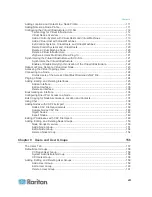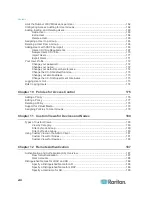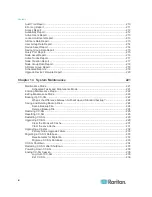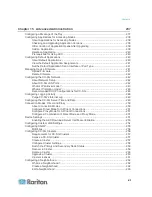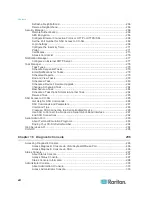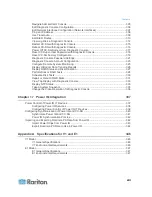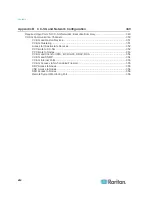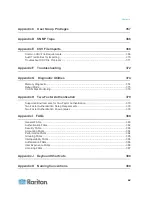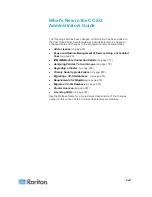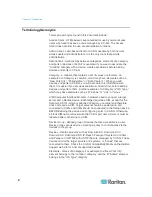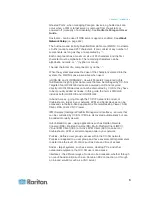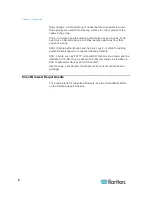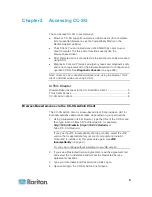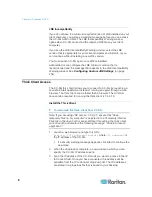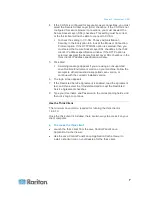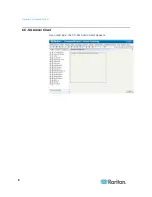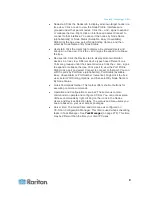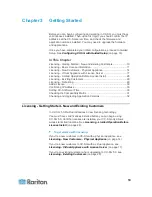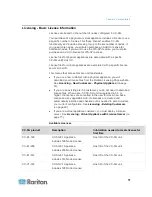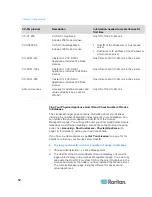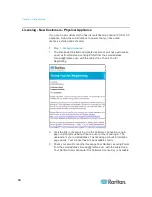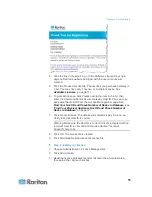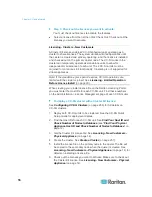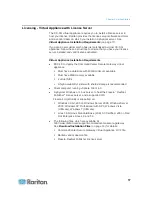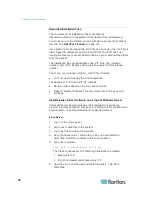
Chapter 1: Introduction
3
Ghosted Ports - when managing Paragon devices, a ghosted port can
occur when a CIM or target server is removed from the system or
powered off (manually or accidentally). See
Raritan's Paragon II User
Guide.
Hostname - can be used if DNS server support is enabled. See
About
Network Setup
(on page 242).
The hostname and its Fully-Qualified Domain Name (FQDN = Hostname
+ Suffix) cannot exceed 257 characters. It can consist of any number of
components, as long as they are separated by “.”.
Each component has a maximum size of 63 characters and the first
character must be alphabetic. The remaining characters can be
alphabetic, numeric, or “-” (hyphen or minus).
The last character of a component may not be “-”.
While the system preserves the case of the characters entered into the
system, the FQDN is case-insensitive when used.
iLO/RILOE and iLO2/RILOE2 - Hewlett Packard's Integrated Lights
Out/Remote Insight Lights Out servers that can be managed by CC-SG.
Targets of an iLO/RILOE device are powered on/off and recycled
directly. iLO/RILOE devices cannot be discovered by CC-SG; they have
to be manually added as nodes. In this guide, the term iLO/RILOE
includes both iLO/RILOE and iLO2/RILOE2.
In-band Access - going through the TCP/IP network to correct or
troubleshoot a target in your network. KVM and Serial devices can be
accessed via these in-band applications: RemoteDesktop Viewer, SSH
Client, RSA Client, VNC Viewer.
IPMI Servers (Intelligent Platform Management Interface) - servers that
can be controlled by CC-SG. IPMI are discovered automatically but can
be added manually as well.
Out-of-Band Access - using applications such as Raritan Remote
Console (RRC), Raritan Console (RC), Multi-Platform Client (MPC),
Virtual KVM Client (VKC) or Active KVM Client (AKC) to correct or
troubleshoot a KVM or serial managed node in your network.
Policies - define a user group's access within the CC-SG network.
Policies are applied to a user group and have several control parameters
to determine the level of control, such as date and time of access.
Nodes - target systems, such as servers, desktop PCs, and other
networked equipment, that CC-SG users can access.
Interfaces - the different ways a Node can be accessed, whether through
an out-of-band solution such as a Dominion KX2 connection, or through
an in-band solution, such as a VNC server.

